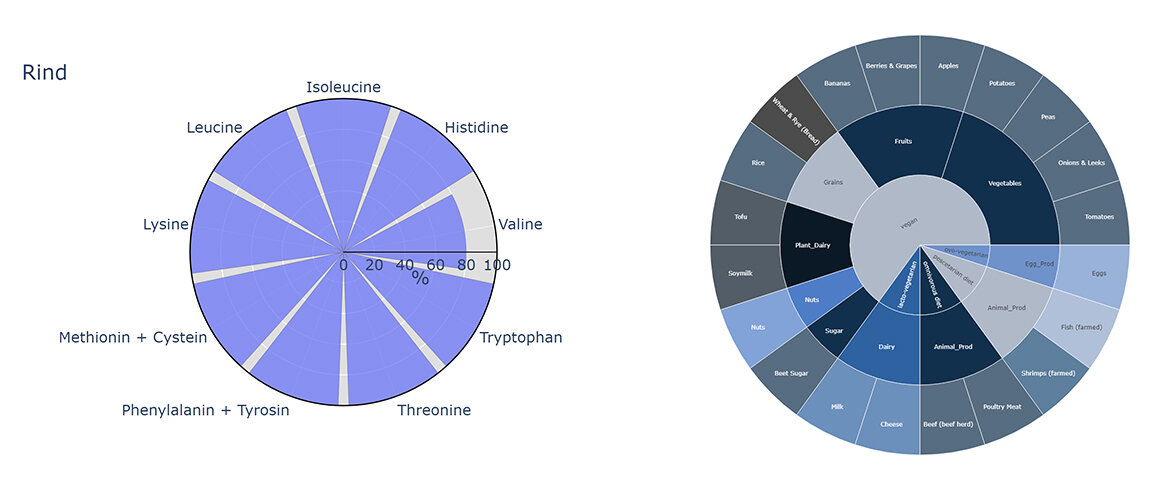Master's thesis: Visualization for the DaPro database
- 18.07.2023
- News Study Program

The visualization of complex data is intended to make correlations visible at a glance.
Christina Köck is studying for a part-time Master's degree in Data Science & Intelligent Analytics and worked with the ZHAW to create visualizations for communicating protein-rich foods as part of her final thesis.
Christina Köck is studying for a part-time Master's degree in Data Science and Intelligent Analytics and has created visualizations for communicating the ZHAW DaPro database for protein-rich foods in an overarching Master's thesis together with the ZHAW, Zurich's higher education institution. The student analyzed design and development theories to develop visualizations as a foundation for the design. When adapting the color, shape and descriptions, the focus was on presenting the information in a way that is easy to understand. The color selection was based on a balanced contrast and avoidance of misleading signal colors. The use of simple shapes but interactive means is intended to make complex relationships understandable at a glance. Distortion of the information must be avoided at all costs.
In order to evaluate the effectiveness of the visualizations, it is essential to test the representations with the users in order to further optimize the visualizations and adapt them to the needs of the target group. This iterative procedure makes it possible to develop a product that meets all requirements.
ALTERNATIVE SOURCES OF PROTEIN TO FEED THE WORLD'S POPULATION
The importance of a sustainable diet is increasingly becoming the focus of society. Protein or protein-rich foods play an important role in this, as they are of great importance for both health and the environment. While a lack of protein or certain protein components (amino acids) is a common cause of death in areas affected by hunger, the per capita consumption of protein and meat in particular is increasing worldwide. The production of meat is known to cause severe environmental pollution, which is why alternatives are being sought. In order to find options that can feed the world's growing population in the future, nutritional quality as well as social and economic aspects must also be taken into account. Possible protein sources must be able to supply essential amino acids, be produced in an environmentally friendly way and be affordable - only then will they offer advantages in all sustainability dimensions.
COMPREHENSIVE LINKING OF DATA IN ONE INTERFACE
In order to find solution approaches, it is important to collect data on these aspects on the one hand and to evaluate and communicate this data effectively on the other. Although there are now countless degree programs on the various sustainability aspects of food, it is very time-consuming to collect, evaluate and compare all the literature. For this reason, the DaPro database project for protein-rich foods was created at the ZHAW. The database is intended to link existing food databases and enrich them with data from current study results. It is intended to support students and researchers in their teaching and research tasks. In future, the database will make it possible to compare and optimize foods based on their environmental impact, health aspects and other sustainability indicators.
